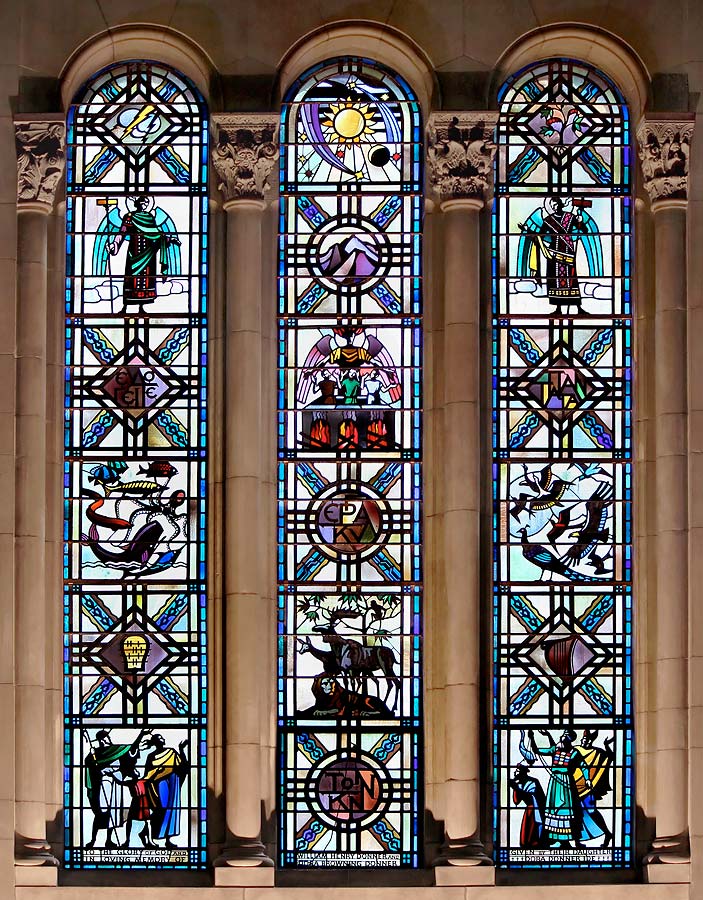Hildreth Meière Documentary Series - Watch Trailer
Hildreth Meière Documentary Series - Watch Trailer
Iconographer: Alfred M. Friend, Jr.Medium: stained glassExecuted by: Rambusch
Almost two decades after Meière designed the apse and narthex in Byzantine-style glass mosaic, the vestry at St. Bartholomew’s turned to Meière once again. This time they asked her to design the six clerestory windows in stained glass to advance their vision of St. Bartholomew’s as “a unique example of 20th-century Byzantine art in America.”1 The iconography was chosen by Byzantine scholar Alfred M. Friend, Jr., who asked Meière to depict the Magnificat, Gloria in Excelsis Deo, Nunc Dimittis, and Benedicite.2

Magnificat

Gloria in Excelsis Deo

Nunc Dimittis

Benedicite
Meière created a unified design for all six clerestory windows, with the idea that each could be fabricated as funds became available. She completed three windows on the south clerestory and the eastern-most window on the north clerestory before her death in 1961.

Narthex domes with the Six Days of Creation; clerestory windows with Magnificat, Gloria in Excelsis Deo, Nunc Dimittis, and Benedicite; half-dome of apse with the Transfiguration, and stringcourse separating upper and lower apse with panels of birds and animals
The vestry asked Meière to allow as much light as possible to enter the church. She and William “Bud” Haley at Rambusch chose an opaque industrial glass that would allow a soft, even light through the windows. Meière used lead cames (the grooved bars holding the glass in place) to create her designs, and reserved colored glass for accents only.3

Detail of angel from Gloria in Excelsis Deo showing use of lead cames to create design
Meière began with thumbnail sketches of individual figures, chose the ones she liked best, and developed them into a design for an entire window. She incorporated Greek letters, symbols, musical instruments, and Byzantine-style garments for her figures that she simplified into sharp silhouettes. Meière enlarged her designs, eventually constructing a full-scale mock-up of the Magnificat window in her studio from paper and cellophane. By attaching it to pulleys, she could study it at different times of day.

Mock-up of Magnificat in paper and cellophane in Meière's studio
Meière’s stained glass designs enabled Meière to unify her decoration for the apse, narthex, and clerestory windows through her Art Deco style.
The final two windows on the north clerestory, Venite in the center (1963) and Benedictus to the west (1964), were executed after Meière’s death by muralist Allyn Cox in accordance with the plan Meière had established for all six clerestory windows.
Dedication of the Gloria in Excelsis Window (New York: St. Bartholomew’s Church, December 4, 1949), n.p.
For a full discussion of the iconography, see Becca Earley Richards, Holy Light: The Iconography and History of the Stained Glass of St. Bartholomew’s Church in New York City (New York, 2007).
For a full discussion, see Catherine Coleman Brawer and Kathleen Murphy Skolnik, The Art Deco Murals of Hildreth Meière (New York: Andrea Monfried Editions, 2014): 109-18.